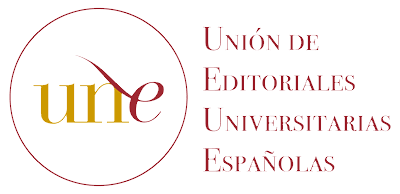Rules for Submission of Original Works
Rules for Submission of Original Works
1.- The works presented, according to the objectives of the magazine, must contribute to the knowledge and dissemination of unpublished research on historical, artistic, literary, and cultural aspects of Seville, its province and, by extension its former Kingdom, without chronological limit.
2.- The originals must be presented anonymously, avoiding any reference throughout the text that could reveal their authorship. Information about the author must be sent on a separate sheet, which must include: the title of the work, name and surname of the author or authors, address, telephone number, city, email, as well as the academic and professional situation and the name of the scientific institution to which it belongs, and ORCID® identifier, if applicable.
When it comes to articles of collective authorship, the authors should discuss the terms when planning the research, record it in writing, and review the agreement throughout the stages of the research. The order of authors must be decided jointly. All authors must be listed. People should not be added as authors if they have not contributed significantly to the project.
If the article has been produced with public or private financing, all sources of financing granted will be indicated in a clear and concise manner, mentioning the private or public entity responsible for said financing, and the identification code of that financing. when it exists. This information may be included in a footnote or under an acknowledgments heading before the bibliography.
3.- The works must be unpublished. Returned work will not be accepted again. The original, prepared with one of the usual word processors, will be presented to the Servicio de Archivo y Publicaciones de la Diputación de Sevilla, Avda. Menéndez Pelayo, 32. Likewise, it can be submitted by email: archivo@dipusevilla.es or publicaciones@dipusevilla.es
4.- The length of the articles will be between 15 and 30 pages, DIN-A4 format, including notes, graphs, tables and bibliography, Times New Roman typeface, 12 points and 1.5 line spacing.
The original will be accompanied by a brief summary of the work in Spanish and English, which should not exceed 150 words, as well as the corresponding keywords, also in Spanish and English.
Shorter works will also be accepted for the Miscellaneous section that must meet the rest of the requirements.
In the case of reviews, their length may not exceed three pages in the same format.
5.- An excessive number of textual quotations will be avoided. Transcriptions or literal reproductions (both literary and documentary) will be in round typeface and in quotation marks. If they are extensive (more than three lines) in an indented paragraph separately, one point less in size. On the other hand, the author's comments in this type of citations must be enclosed in square brackets, in order to clearly distinguish them from the quoted text.
Italics will be used in the titles of works, books, magazines and newspapers, as well as for words in another language. Regarding the use of capital letters, it will be adjusted to the rules of the RAE.
6.- The graphic material to illustrate the text, when necessary, must be original, presented numbered and with a brief caption It will be delivered files separated in high resolution.
Photographs, they will be presented in JPG or TIFF format with a resolution of 300 pp at their print size. As for graphics, they must take into account the font size to facilitate their reading and interpretation. As a general rule, illustrations may not exceed twelve.
All graphic material must be original from the author or have the pertinent reproduction authorizations.
7.- The notes, numbered consecutively, will be written at the foot of the page, using Times New Roman font, 10 points.
8,- The bibliographic citations should repect order, punctuation and spelling, they will adjust to the following criteria, according to UNE 50-104-94 and ISO 690 and 690-2
a) Monographs:
Author: Surname (capital letters) and first name
Title: in italics
Volume or volume, if there is: t. ; vol.
Publication (place, publisher)
Year
Reference to the page or pages: p. / pp.
Example: AGUILAR PIÑAL, Francisco. History of Seville: 18th century. Seville: University, 1989, p. 116
b) Collaborations, introductions or prologues in monographs and articles in serial publications:
Author: in the same way as in the monographs
Title: in quotation marks, round type and without underlining
Title of the monograph or magazine where it is inserted: in italics
Year, volume, number (in the case of serial publications)
Publication (place, editor) and year (in the case of collaborations on collective works)
Reference to the pages: pp.
Examples: REAL DÍAZ, José J. “The Sevillian Rodrigo de Bastidas. Some rectifications around his figure”. Archivo Hispalense, 1962, XXXVI, no. 111-112, pp. 63 -102.
SÁNCHEZ BLANCO, A. "The administrative document and its value" in Proceedings of the Conference Management of archives and documents in public administrations. Seville: Ministry of Culture and Environment, 1994, pp. 169-189.
9.- Documentary quotes will be made in the following order:
Name or acronym (without intermediate points) of the Archive, Library or Institution,
Name of the fund or collection (and, if applicable, section), signature.
Name/title of the document and date(s) of the document
Example:
Archive of the Provincial Council of Seville (ADPSE), Hospital de las Cinco Llagas, book 102. Book of deaths of patients, 1739-1765.
10.- The works will be evaluated by the Editorial Board, as well as, external evaluators, by the double-blind peer review system.
11.- Authors who want to publish their articles in Archivo Hispalense will sign over their commercial rights free of charge without prejudice to all the rights recognized by the Intellectual Property Law. A maximum of three copies will be given to each author and the offprint of the article in PDF format.
These materials shuld not be publised bejore
two years. (Presidency Resolution No. 1205 of March 27, 2017. BOP No. 93 of April 25, 2017)
Privacy statement:
The names, email addresses, or any other data of
Personal information provided to us by the authors will only be used for the purposes of the Archive and Publications Service and will not be available for any other purpose.
Rules for transcription and editing of documents:
We have considered it necessary to establish rules that must be followed when transcribing and editing old documents. Those listed below are based on those established by the International Diplomatic Commission in 1984, which are the result of international consensus.
- The spelling of the original document must always be respected. In the case that it presents obvious errors or faults, it must be indicated with the word sic (sic).
- The texts will be punctuated according to current rules, adapting the use of capital letters and lowercase to present practices and punctuation marks. The same will be done with the accentuation of the words.
- All abbreviations must be fully developed.
- Double consonants are eliminated only if they are at the beginning of a word, and are retained if they are in the middle of the word.
- If the text is in Spanish and the sigmatic “s” is used, this spelling should be transcribed as s or as z depending on whether the current sound is a voiceless alveolar fricative s or a voiceless interdental fricative ce.
- Text interpolations must always be indicated between sharp brackets < >, and must be kept in the same place where they appear in the document.
- Gaps in the text are indicated with square brackets [ ]. If it can be reconstructed, the syllables or words are placed between these brackets. If this reconstruction were not possible, the indication of three ellipses within the brackets will suffice to indicate it […].
In order to facilitate the location of phrases or words within the document, it is essential to number the text. Based on this, if the document is drawn on parchment or paper and its format is landscape, the line change is usually indicated by an oblique hyphen / and in superscript the corresponding line number is indicated three by three, e.g.: /6. However, if the document is written on parchment or paper, but in folio format and the surface used for the text exceeds the first page, it is not necessary to indicate or number the lines.
It is only specified by means of a double oblique hyphen // the change of folio indicating both its number and its recto or verso, eg:://1v or //9r.
- Any other type of incident that you want to point out in the text must be done in a footnote.
[Rules approved by Resolution of the Deputy of Culture and Citizenship No. 5617/2022 of August 2]
© Provincial Council of Seville. The originals published in the editions of the Archivo Hispalense magazine are the intellectual property of their authors and of the Diputación de Sevilla, and can be freely used for educational and academic uses, provided the author and the publication are cited. With respect to any other partial or total reproduction of the same, in any case, the use must be communicated and authorization requested from the direction of the journal, always being necessary to cite the source.



